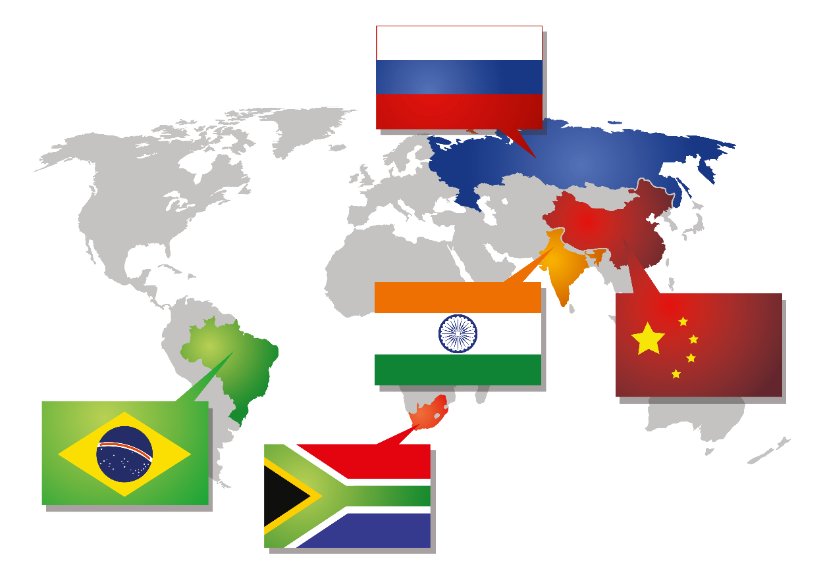BRICS vs NATO

BRICS vs NATO
While NATO is a military alliance, BRICS is not. BRICS refers to emerging countries with rapidly growing economies. Therefore, NATO and BRICS are fundamentally different. However, recently, BRICS leaders have been holding summit meetings online. Because two of the member countries, China and Russia, are hostile to the United States, they are trying to strengthen cooperation among the BRICS countries.
What is BRICS?
BRICS is a term formed from the first letter in the name of each of five countries: Brazil, Russia, India, China, and South Africa. Since its use in a report issued by Goldman Sachs in 2003, the term has become widely used by the general public. This report stated that the BRICs countries (which numbered four at the time) could be among the top six countries in terms of GDP by 2050.
The term BRICs was originally coined to describe the four countries of Brazil, Russia, India, and China. These four BRICs countries were expected to grow significantly based on their large land area, large populations, and abundant natural resources. BRICs represented emerging countries that were expected to experience remarkable economic growth in the future. Later, South Africa was added and the lowercase “s” (representing the plural) became an uppercase “S” for South Africa. Thus, the name BRICS (five emerging countries) was coined.
Until about 10 years ago, the world economy was centered on a tripolar system of the United States, Europe, and Japan. However, the day might not be far off when the new system will consist of the United States, the European Union (EU), and BRICS.
Conflict between NATO and BRICS
On June 23, 2022, a BRICS summit meeting was held online and attended by Russian President Vladimir Putin and Indian Prime Minister Narendra Modi.
Chinese President Xi Jinping said, “Some countries are seeking absolute security through the expansion of military alliances, and are practicing self-reliance on a large scale, ignoring the rights and interests of other countries. If this dangerous momentum continues, the world will become even more unsettled and unstable.” He strongly criticized the United States and Europe for moving toward the expansion of NATO.
Chinese and Russian leaders showed their unity with an eye toward the U.S. and Europe. The meeting gave the impression of a divided international community ahead of the Group of Seven (G7) summit and the NATO summit to be held one after another at the end of June.
Thus, although BRICS is not a military alliance, it has a confrontational relationship with NATO and G7.
Why are the BRICS countries growing so rapidly?
Here are some commonalities among the BRICS countries.
(1) Large land area and abundant natural resources
(2) Large population and abundant young labor force
(3) Low unit labor costs and low-cost production of products
(4) Large population makes them a promising market.
BRICS Expands: Six New Nations Join the Influential Alliance (updated Aug 25, 2023)
The BRICS alliance announced on August 24, 2023, that it will welcome six new member countries starting from January of the following year. These new entrants are Argentina, Egypt, Ethiopia, Iran, Saudi Arabia, and the United Arab Emirates (UAE). This expansion underlines BRICS’s ambition to challenge the international order dominated by Western powers by rallying countries from what is termed the “Global South” — emerging and developing nations.
Saudi Arabia and the UAE, both oil-rich nations, offer substantial financial strength, potentially fortifying the consortium’s developmental funding initiatives for other developing countries. Egypt and Ethiopia, each boasting populations surpassing 100 million, enhance the group’s demographic heft. Argentina’s inclusion has been particularly championed by its neighboring BRICS member, Brazil. Meanwhile, the induction of Iran, a nation persistently at odds with the West over nuclear developments, is a noteworthy move.
While there were applications from 23 countries and regions, not all were accepted due to concerns of overextension, as articulated by Brazil’s President Lula, likening an all-inclusive expansion to a “Tower of Babel”.
This expansion, as emphasized by China’s President Xi Jinping in a post-conference press briefing, is historical, and he believes it will infuse new energy into the BRICS collaborative mechanism.
The decision reflects a strategic alignment, especially as China, amidst escalating tensions with the U.S., has been an avid proponent of this enlargement. The intention behind broadening the alliance with more nations from the “Global South” is seemingly to counteract and revise the international order steered predominantly by the US and Europe.
The Next 11
The Next 11 are the next growth countries after the BRICS. The Next 11 countries were selected based on criteria such as economic growth, political stability, and population growth, and include South Korea, Mexico, Turkey, Indonesia, Iran, Pakistan, Nigeria, the Philippines, Egypt, Bangladesh, and Vietnam.










